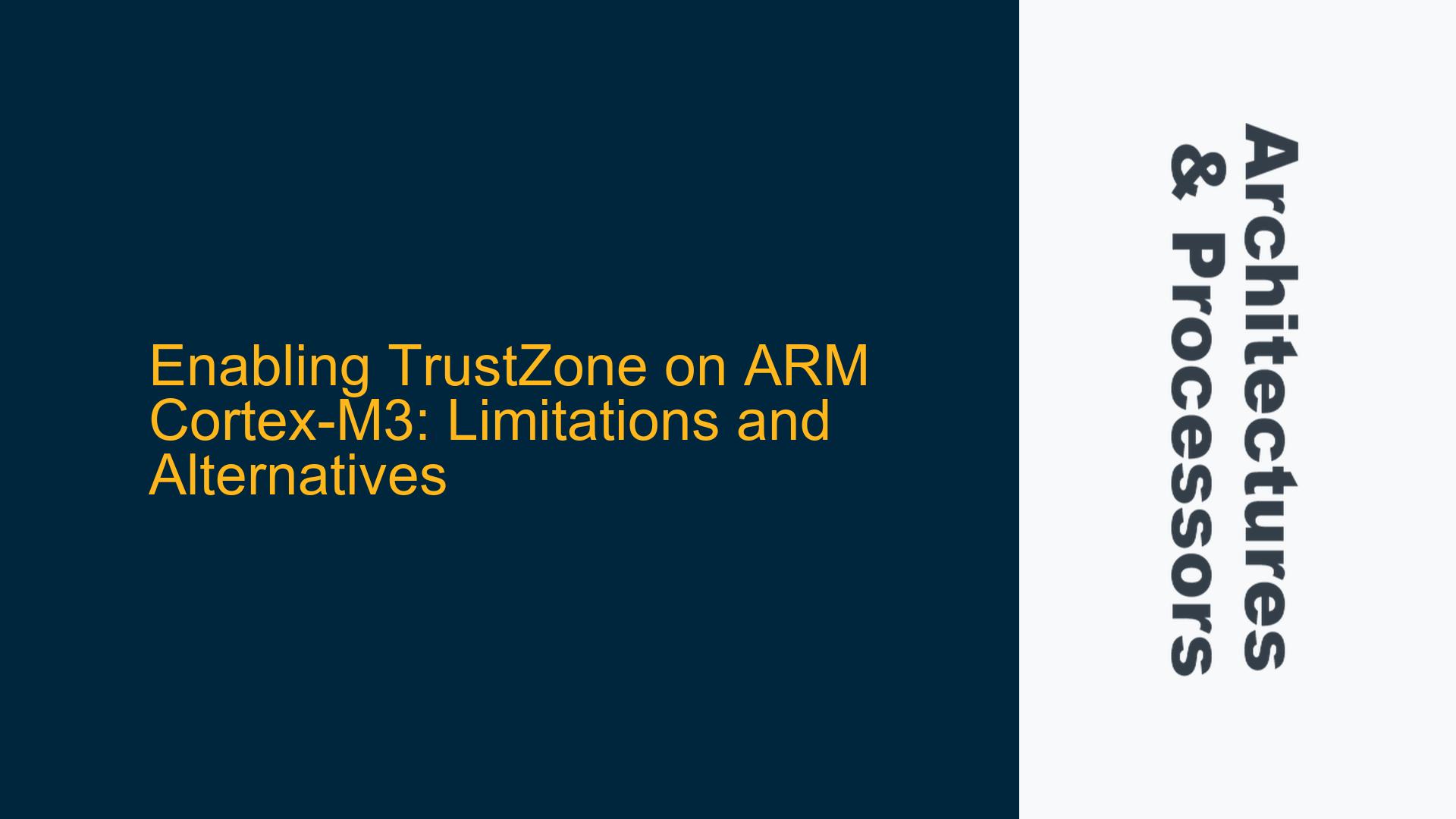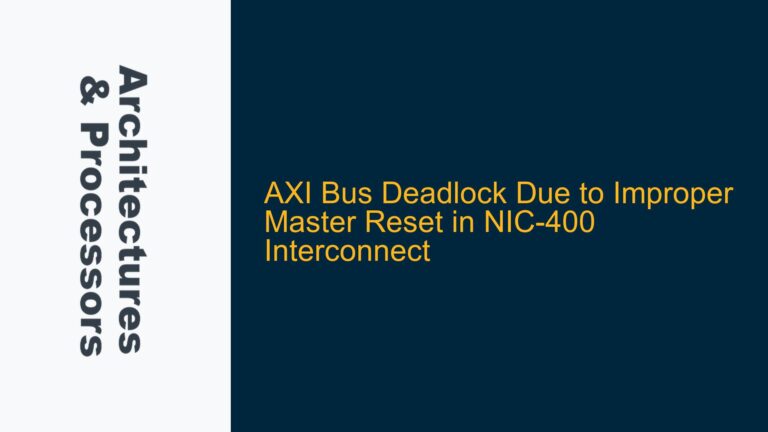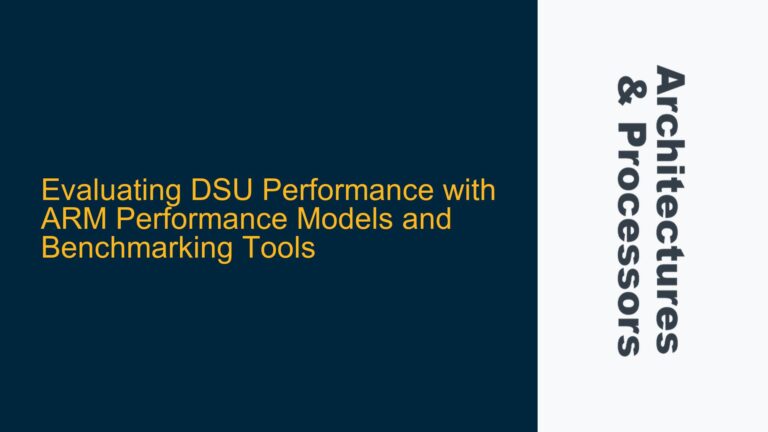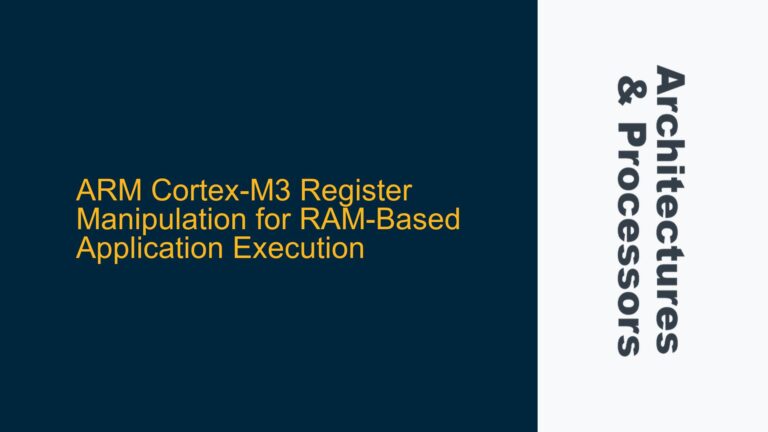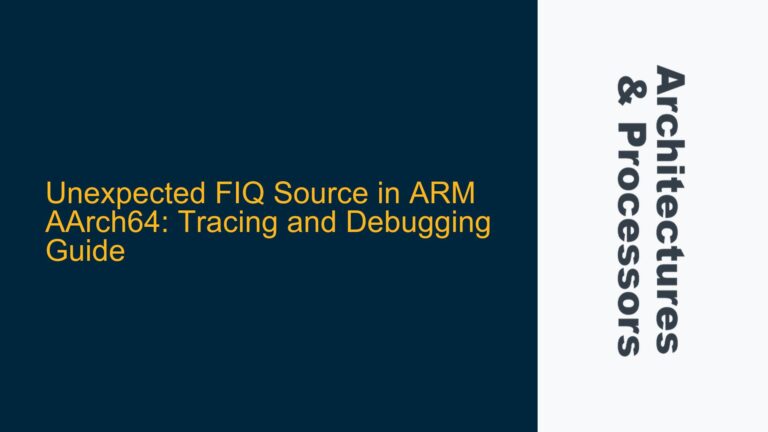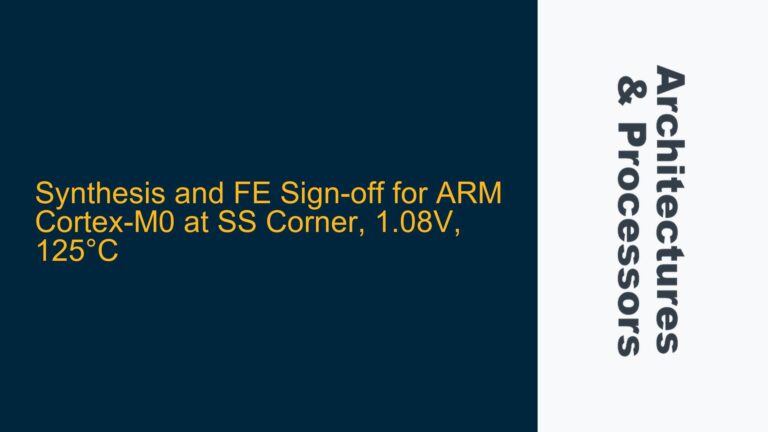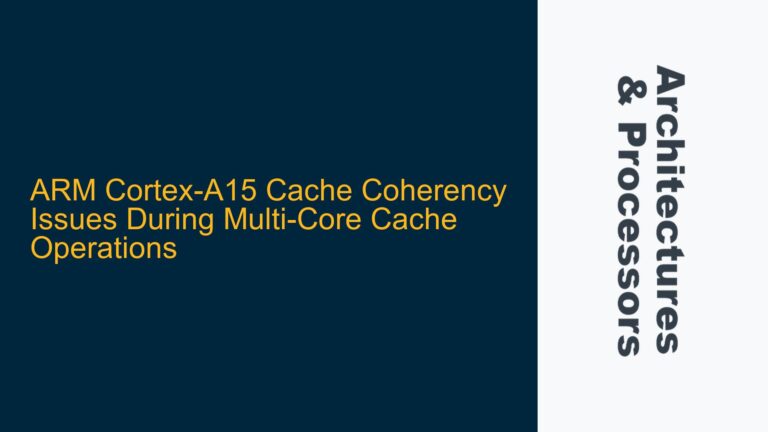TrustZone Architecture Compatibility in ARM Cortex-M3
The ARM Cortex-M3 is a widely used microcontroller core based on the ARMv7-M architecture. It is known for its efficiency, low power consumption, and robust performance in embedded systems. However, one of its limitations is the lack of support for ARM TrustZone technology, a hardware-based security feature introduced in the ARMv8-M architecture. TrustZone provides a secure execution environment by partitioning the system into secure and non-secure states, allowing sensitive operations to be isolated from less trusted software.
The Cortex-M3, being an ARMv7-M architecture processor, does not include the hardware mechanisms required to implement TrustZone. TrustZone relies on specific architectural extensions, such as the Security Attribution Unit (SAU) and the Implementation Defined Attribution Unit (IDAU), which are absent in ARMv7-M. These units are responsible for defining memory and peripheral access permissions for secure and non-secure worlds. Without these hardware features, it is impossible to natively enable TrustZone on a Cortex-M3 processor.
Attempting to implement TrustZone-like functionality on a Cortex-M3 through software alone would be highly impractical. Software-based isolation mechanisms lack the hardware-enforced boundaries that make TrustZone effective. For example, a software-based solution would rely on manual memory partitioning and context switching, which introduces significant overhead and complexity. Additionally, such an approach would be vulnerable to exploits that bypass software checks, undermining the security guarantees that TrustZone is designed to provide.
Vendor-Specific TrustZone Implementation on ARMv8-M Devices
For developers seeking to leverage TrustZone, the appropriate path is to use an ARMv8-M based microcontroller, such as the Cortex-M23, Cortex-M33, Cortex-M55, or Cortex-M85. These processors include the necessary hardware support for TrustZone. However, it is important to note that not all ARMv8-M devices come with TrustZone enabled by default. The implementation of TrustZone is ultimately determined by the microcontroller vendor, who may choose to exclude it to reduce cost or complexity.
If a vendor does not enable TrustZone on an ARMv8-M device, it is generally not possible for the end user to add it. TrustZone is a hardware feature that requires specific modifications to the processor’s design and memory architecture. These modifications are made during the silicon fabrication process and cannot be retrofitted through software or firmware updates. Therefore, developers must carefully select a microcontroller that explicitly supports TrustZone if this feature is required for their application.
In cases where TrustZone is supported but not enabled by default, vendors may provide configuration options or tools to activate it. For example, some vendors offer secure bootloaders or configuration utilities that allow developers to define secure and non-secure regions in memory and peripherals. These tools typically rely on the SAU and IDAU to enforce the desired security policies. Developers should consult the vendor’s documentation and support resources to determine the availability of such tools and the specific steps required to enable TrustZone.
Alternatives to TrustZone for ARM Cortex-M3 Security
While TrustZone is not available on the Cortex-M3, there are alternative approaches to achieving a reasonable level of security in embedded systems. These methods rely on software-based techniques and existing hardware features to isolate sensitive code and data. Although they do not provide the same level of assurance as TrustZone, they can be effective in many use cases.
One common approach is to use a Memory Protection Unit (MPU) to create isolated memory regions. The Cortex-M3 includes an MPU that can be configured to restrict access to specific areas of memory. By carefully defining memory regions and access permissions, developers can prevent unauthorized code from accessing sensitive data. However, the MPU has limitations, such as a finite number of regions and coarse granularity, which may make it difficult to implement fine-grained security policies.
Another technique is to use a secure bootloader to verify the integrity of the firmware before execution. A secure bootloader ensures that only trusted code is loaded into the device, reducing the risk of malicious software being introduced. This approach can be combined with cryptographic techniques, such as digital signatures, to further enhance security.
For applications requiring higher levels of security, developers may consider upgrading to an ARMv8-M based microcontroller that supports TrustZone. This provides a more robust and scalable solution, particularly for systems that handle sensitive data or operate in untrusted environments. The transition to an ARMv8-M device may require some effort, but the benefits of hardware-enforced security often outweigh the costs.
In summary, while TrustZone cannot be enabled on the Cortex-M3, developers have several options for implementing security in their systems. By leveraging the MPU, secure bootloaders, and other techniques, it is possible to achieve a reasonable level of protection. For applications with stringent security requirements, upgrading to an ARMv8-M device with TrustZone support is the recommended approach.
Detailed Comparison of ARMv7-M and ARMv8-M Security Features
To better understand the limitations of the Cortex-M3 and the advantages of ARMv8-M devices, it is helpful to compare the security features of the two architectures. The following table provides a high-level overview of the key differences:
| Feature | ARMv7-M (Cortex-M3) | ARMv8-M (Cortex-M23/33/55/85) |
|---|---|---|
| TrustZone Support | No | Yes |
| Memory Protection Unit (MPU) | Yes (limited regions) | Yes (enhanced capabilities) |
| Security Attribution Unit (SAU) | No | Yes |
| Implementation Defined Attribution Unit (IDAU) | No | Yes |
| Secure Bootloader Support | Possible (software-based) | Native (hardware-assisted) |
| Cryptographic Extensions | No | Optional (e.g., Cortex-M33) |
As shown in the table, ARMv8-M devices offer significant advantages in terms of security features. The inclusion of TrustZone, SAU, and IDAU provides a robust foundation for implementing secure systems. Additionally, ARMv8-M processors often include optional cryptographic extensions, which can further enhance security by accelerating encryption and decryption operations.
Practical Steps for Migrating from Cortex-M3 to ARMv8-M
For developers considering a migration from the Cortex-M3 to an ARMv8-M device, the following steps can help ensure a smooth transition:
-
Evaluate Security Requirements: Determine the specific security requirements of the application. This includes identifying sensitive data, potential threats, and the desired level of isolation between secure and non-secure components.
-
Select an Appropriate Microcontroller: Choose an ARMv8-M based microcontroller that meets the application’s performance, power, and security requirements. Ensure that the selected device supports TrustZone and any additional features, such as cryptographic extensions, that may be needed.
-
Review Vendor Documentation: Consult the vendor’s documentation to understand the specific implementation of TrustZone and any configuration tools that are available. This may include secure bootloaders, configuration utilities, and example code.
-
Define Secure and Non-Secure Regions: Use the SAU and IDAU to define memory and peripheral regions for secure and non-secure worlds. This involves specifying access permissions and ensuring that sensitive data is isolated from non-secure code.
-
Implement Secure Bootloader: Develop or configure a secure bootloader to verify the integrity of the firmware before execution. This may involve using cryptographic techniques, such as digital signatures, to ensure that only trusted code is loaded.
-
Test and Validate: Thoroughly test the system to ensure that security policies are correctly enforced and that there are no vulnerabilities. This may include penetration testing, code reviews, and formal verification.
By following these steps, developers can successfully migrate to an ARMv8-M device and take advantage of the enhanced security features provided by TrustZone.
Conclusion
The ARM Cortex-M3 is a powerful and efficient microcontroller core, but its lack of TrustZone support limits its suitability for applications requiring robust security. Developers seeking to implement secure systems should consider upgrading to an ARMv8-M based device, such as the Cortex-M23, Cortex-M33, Cortex-M55, or Cortex-M85. These processors provide the necessary hardware features, including TrustZone, to create isolated secure and non-secure environments.
For applications where upgrading is not feasible, alternative approaches, such as using the MPU and secure bootloaders, can provide a reasonable level of security. However, these methods have limitations and may not be sufficient for high-security use cases.
Ultimately, the choice of microcontroller and security strategy depends on the specific requirements of the application. By carefully evaluating these requirements and understanding the capabilities of different ARM architectures, developers can make informed decisions and implement effective security solutions.
